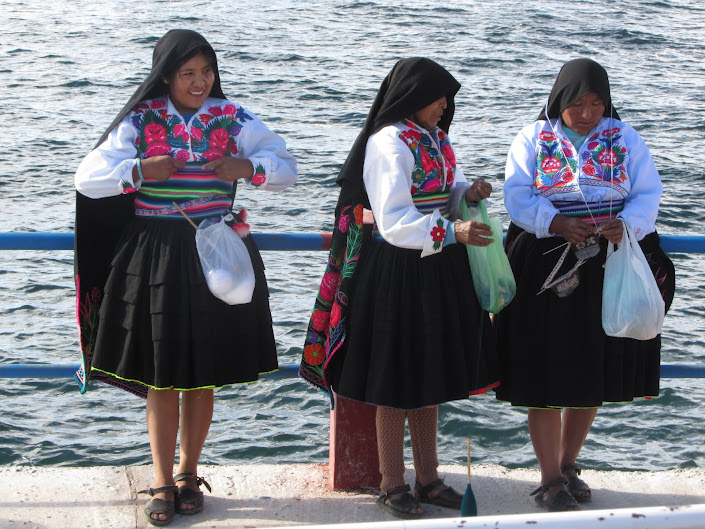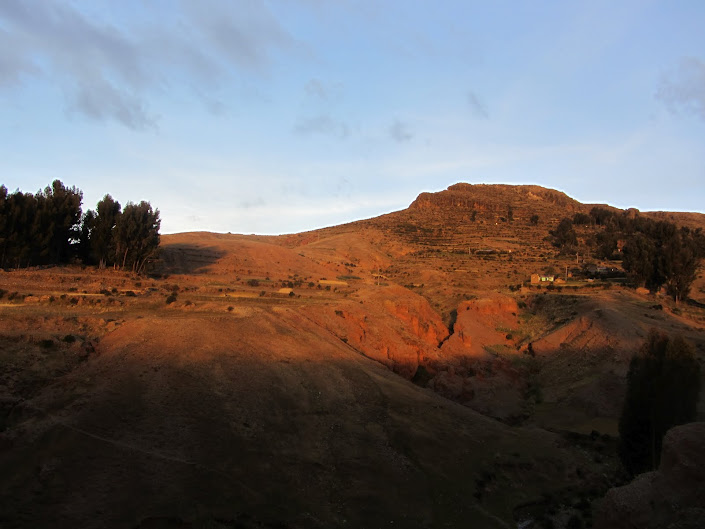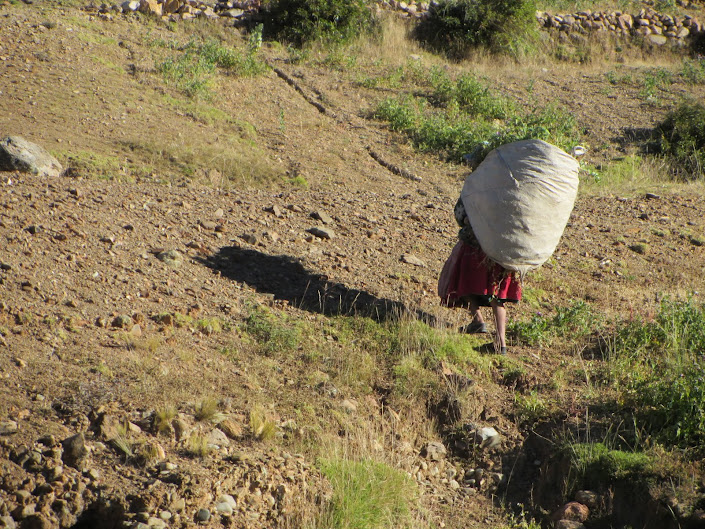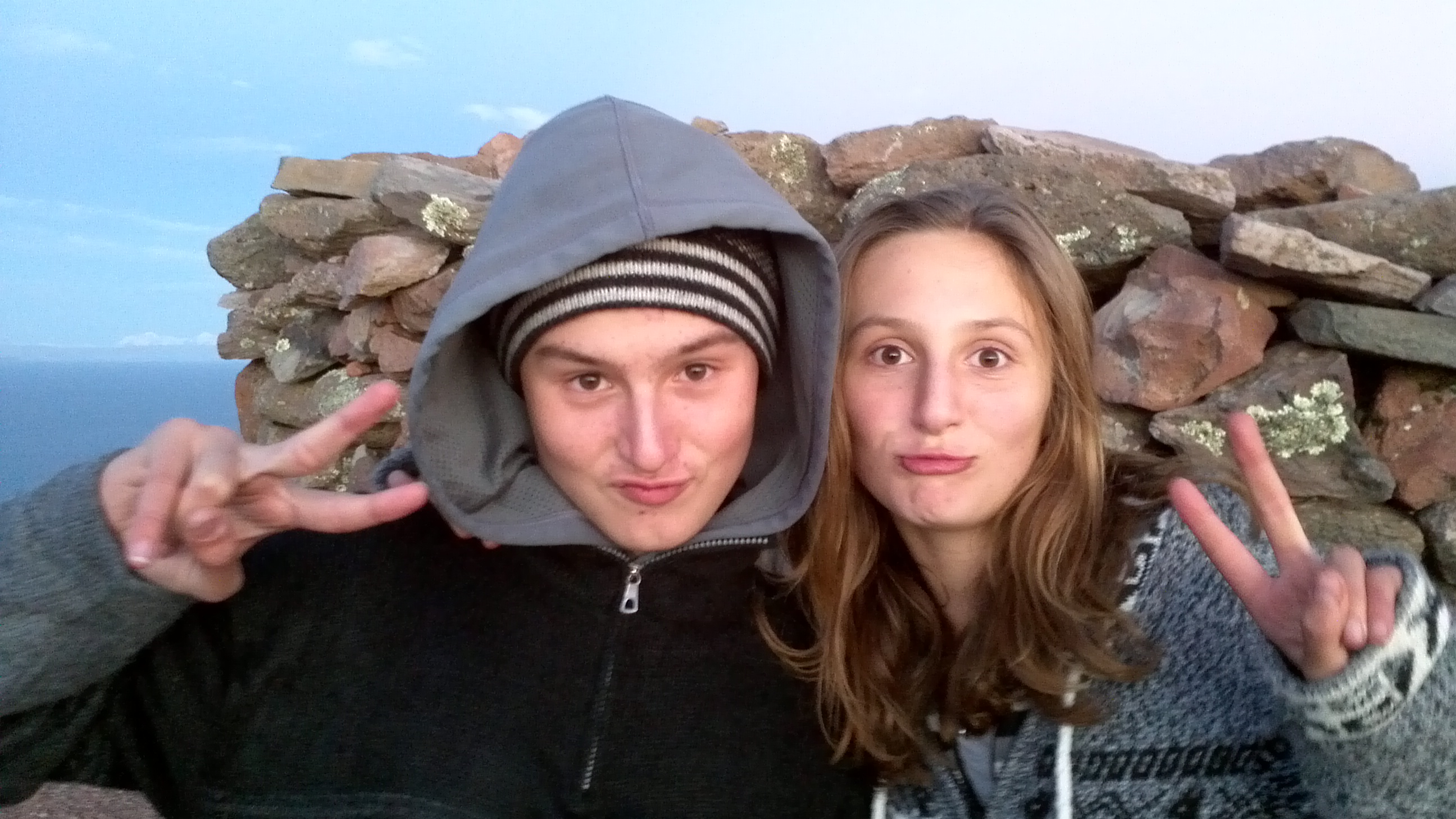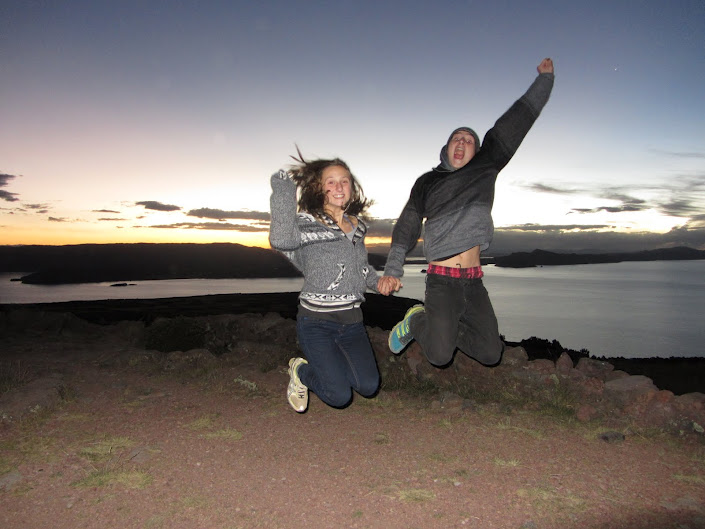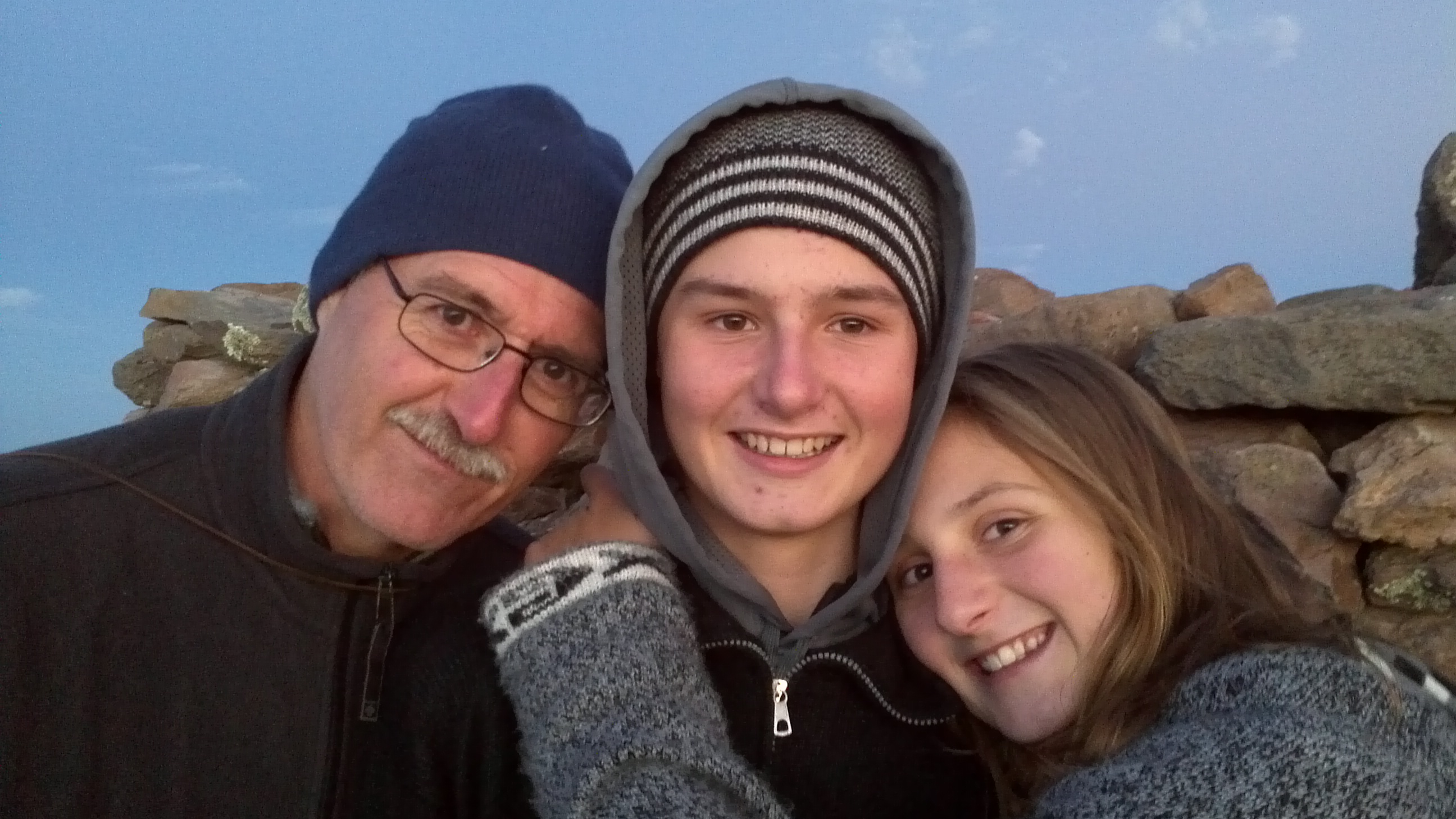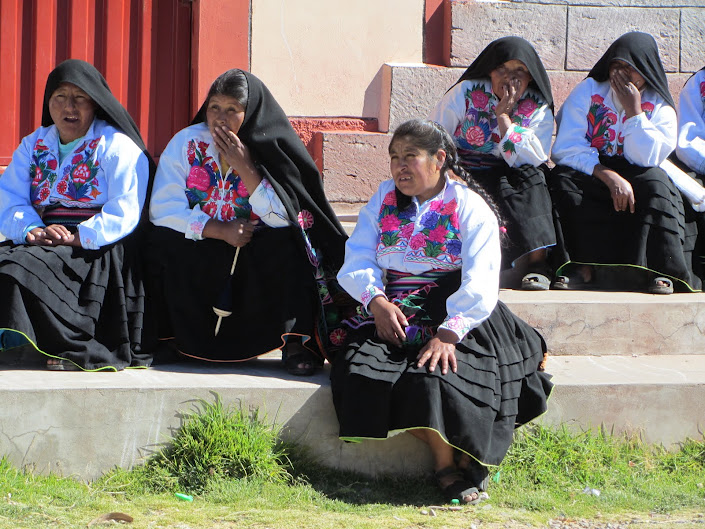 Lucy met us at the boat dock of the island Amantaní, three hours out from the mainland on Lake Titicaca. She had big smile on a face younger than most of the other women, but she wore the same black skirt, the same white blouse, and the same black shawl over her head. At the ends of the shawl she had embroidered beautiful flowers in bright blue, red, pink, and green. Her skirt was tight around her thick waist and fluffed out to her knees. On her feet she wore rubber tire sandals, no socks. She took us up to her home, climbing the steep, rocky trail, all the while spinning some white wool on a spindle that dangled around her bare ankles.
Lucy met us at the boat dock of the island Amantaní, three hours out from the mainland on Lake Titicaca. She had big smile on a face younger than most of the other women, but she wore the same black skirt, the same white blouse, and the same black shawl over her head. At the ends of the shawl she had embroidered beautiful flowers in bright blue, red, pink, and green. Her skirt was tight around her thick waist and fluffed out to her knees. On her feet she wore rubber tire sandals, no socks. She took us up to her home, climbing the steep, rocky trail, all the while spinning some white wool on a spindle that dangled around her bare ankles.
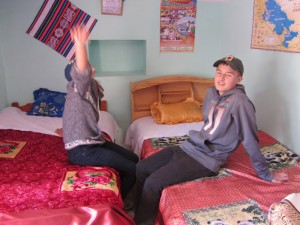 We were to be her guests until after breakfast the next morning. Her home consisted of several mud brick buildings around a courtyard. She took us up to our room, which had three beds with thick alpaca wool blankets. We waited there until she called us for lunch.
We were to be her guests until after breakfast the next morning. Her home consisted of several mud brick buildings around a courtyard. She took us up to our room, which had three beds with thick alpaca wool blankets. We waited there until she called us for lunch.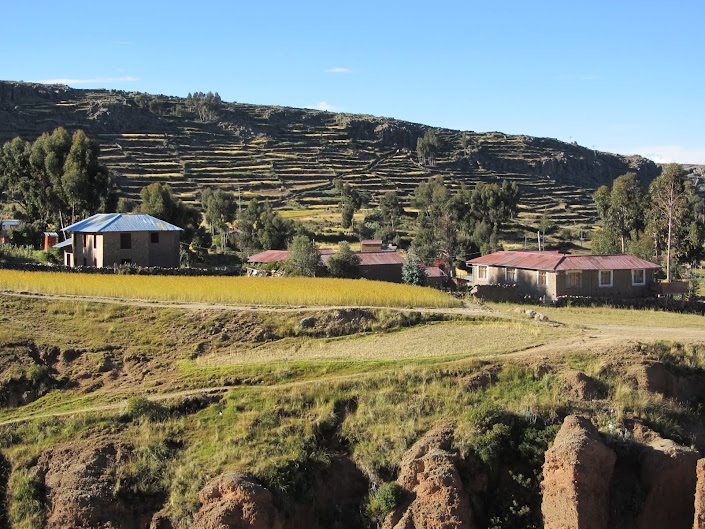
And what wonderful and simple food she served. There was quinoa soup with fava beans, potatoes, carrots and onions seasoned with the local mint, muña. 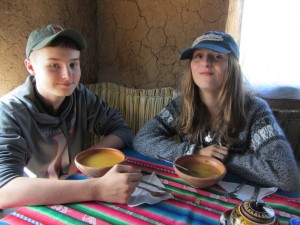 Then we had a main dish of two varieties of potatoes, a slice of grilled, local cheese, and corn on the cob. The corn in Peru is not like that in the States. The kernels are huge and a bit starchy and complement the cheese perfectly. We sat a narrow table on thin planks for benches. The mud of the walls around us was peeling, like that of the mud home we’d slept in in Thailand. We talked with Lucy between bites.
Then we had a main dish of two varieties of potatoes, a slice of grilled, local cheese, and corn on the cob. The corn in Peru is not like that in the States. The kernels are huge and a bit starchy and complement the cheese perfectly. We sat a narrow table on thin planks for benches. The mud of the walls around us was peeling, like that of the mud home we’d slept in in Thailand. We talked with Lucy between bites.
Lucy’s first language is Quechua, one of the native languages of Peru. Spanish is her second language; she learned it in school. She uses Spanish to communicate with the tourists who come through. But the tourists don’t visit her often. Tour boats do come to this island of about 4000 people every day, but the community has realized that tourism could ruin the islanders’ way of life. So a scheme was devised to share the work, exposure, and wealth of the tourists among all of the islanders. No family hosts a tourist more than once or twice a month. Instead the visits rotate through the families and through the town. Everyone gets the opportunity to host a tourist during the rotation. Of course, this brings money to the families. But the main industry is still farming, sheepherding, and handicrafts. Thus Lucy’s constant spinning of wool.
After lunch we took the opportunity to climb to the top of the island. The island is comprised of two volcanoes: Pachamama (Earth Mother) and Pachatata (Earth Father). On top of each of the mountains is a temple.  On Pachamama the temple is round, on Pacatata, square. The temples themselves are closed except one day a year close to the summer solstice. This is one of the most important holidays on the island. Like in much of the Peru we visited, the people are ostensibly Christian, but the worship of the mountains and their powers seems to be deeper and more pervasive. The rituals honoring the spirits of the mountains, the apus, have been practiced long before the Spanish, even long before the Incans. The temples at the top of the mountain provided a place to continue this worship. We got to enjoy a beautiful view in the perfect light of sunset as we leaned against the temple’s sun warmed stones.
On Pachamama the temple is round, on Pacatata, square. The temples themselves are closed except one day a year close to the summer solstice. This is one of the most important holidays on the island. Like in much of the Peru we visited, the people are ostensibly Christian, but the worship of the mountains and their powers seems to be deeper and more pervasive. The rituals honoring the spirits of the mountains, the apus, have been practiced long before the Spanish, even long before the Incans. The temples at the top of the mountain provided a place to continue this worship. We got to enjoy a beautiful view in the perfect light of sunset as we leaned against the temple’s sun warmed stones.
We sat at the top of Pachatata, over 4000 meters high and watched as the sun set and the stars came out. There are a lot of stars to see when sitting at over 4000 meters. Scorpio rose above the horizon to reveal its curly tail. The milky way split the sky in two. Right above us was a dark spot in the milky way. The southern cross fit into that spot like the piece of a puzzle. We even found the big dipper, but it pointed to the northern star well below the horizon.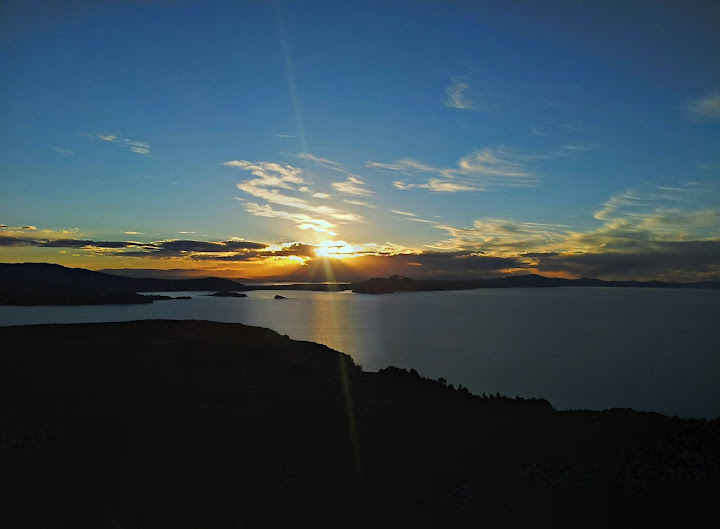


After the sun set Lucy led us home to supper. We tripped on the trail as we tried to keep looking up at the stars instead of at the path where her flashlight shone. We headed back to the kitchen for a meal of potato and corn soup and then potato stew spiced with coriander and a side of rice. With the setting of the sun the temperature had started to chill and the food warmed and filled our bellies. And now it was time to dance.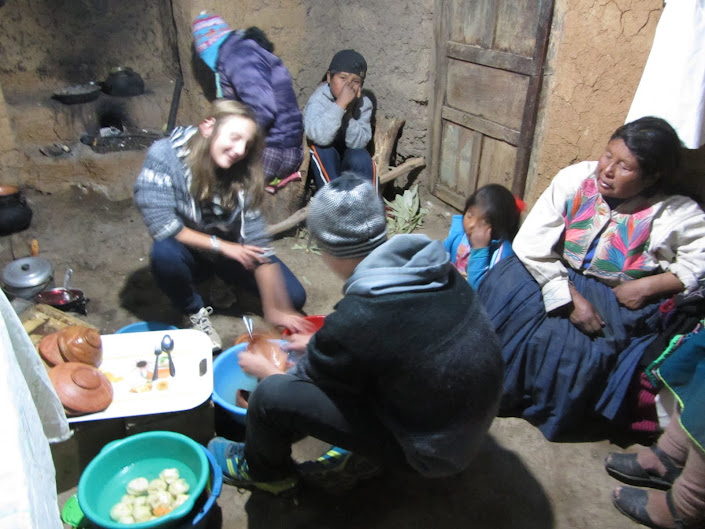
The village put on a dance for all of the tourists visiting that evening. There may have been maybe 30 of us. All the hosts had all dressed their visitors up in traditional clothing. Cat and I wore fluffy skirts, thick flannel blouses, and a shawl over our heads. The outfit was pulled together with a sash tied like a corset around our waists. Bill and Hank wore ponchos and classic Peruvian hats, pointed at the top with ear flaps hanging down over their ears. We wore these over our regular clothes including our sweaters. We were warm. Lucy wore the outfit that she’d been wearing all day, no extra layers, no socks, no hat, no coat. 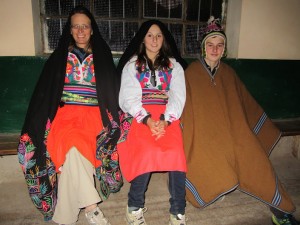 She didn’t seemed chilled at all. It did, of course, help to move around a bit. And Lucy loved to dance. The band consisted of a bass drum, a guitar and a mandolin, and, of course, a couple of pan flutes. As soon as the band started playing Lucy came and grabbed our hands, pulling us onto the dance floor. We line danced, circle danced and partner danced. Throughout the dancing, Cat and I struggled with our shawls, trying to keep it on our heads. We ended up wearing them around our shoulders. Lucy would just grab hers as it started to slip and swiftly place back on her head, never missing a dance step. We danced to almost all of the songs. In what is the usual manner for our family, we were some of the last to leave the party.
She didn’t seemed chilled at all. It did, of course, help to move around a bit. And Lucy loved to dance. The band consisted of a bass drum, a guitar and a mandolin, and, of course, a couple of pan flutes. As soon as the band started playing Lucy came and grabbed our hands, pulling us onto the dance floor. We line danced, circle danced and partner danced. Throughout the dancing, Cat and I struggled with our shawls, trying to keep it on our heads. We ended up wearing them around our shoulders. Lucy would just grab hers as it started to slip and swiftly place back on her head, never missing a dance step. We danced to almost all of the songs. In what is the usual manner for our family, we were some of the last to leave the party.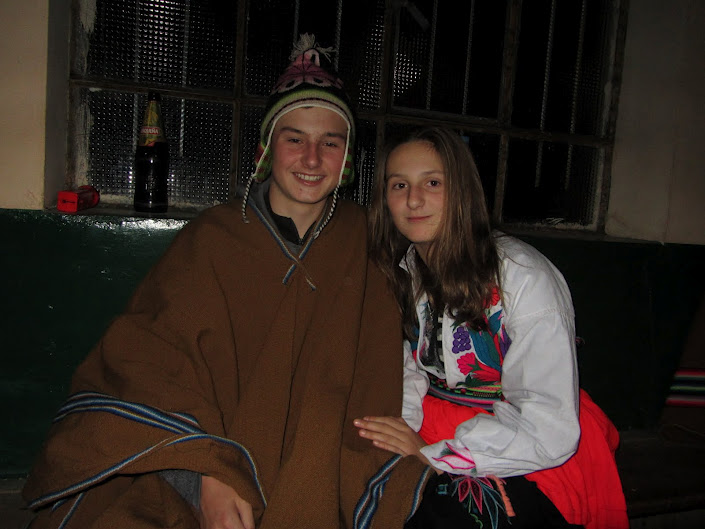
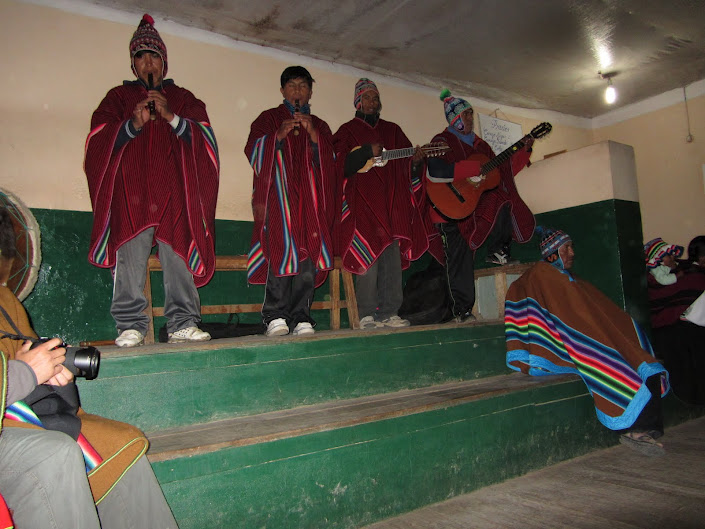
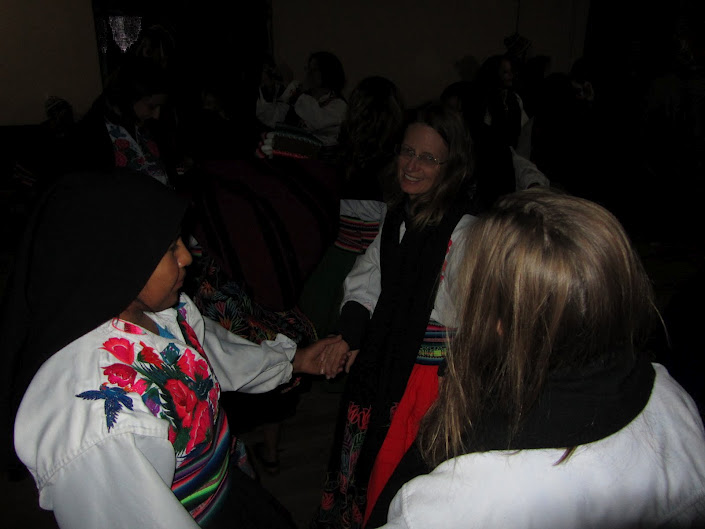
The night was cold. Really, really cold. Just to remind us how high we were my phone’s weather app said it was to get well below freezing. I slept fitfully on the lumpy mattress. But with the thick blankets, my coat, my hat, and Bill lying next to me, I stayed warm. In the morning, after our pancakes, it was time to leave Amantaní. Lucy led us to the dock. Her spinning was done. She was now making a ball out of the white yarn she had made. As we loaded onto the boat, Lucy leaned against the handrail, working her yarn. She and the other women gossiped, dressed in their fluffy black skirts, white blouses, and black shawls over their heads. Each shawl was decorated by its owner with flowers of bright colors. They all wore rubber tire sandals. Only a few wore socks. Like Lucy most did not. They smiled and waved as the boat pulled away, still working their wool.